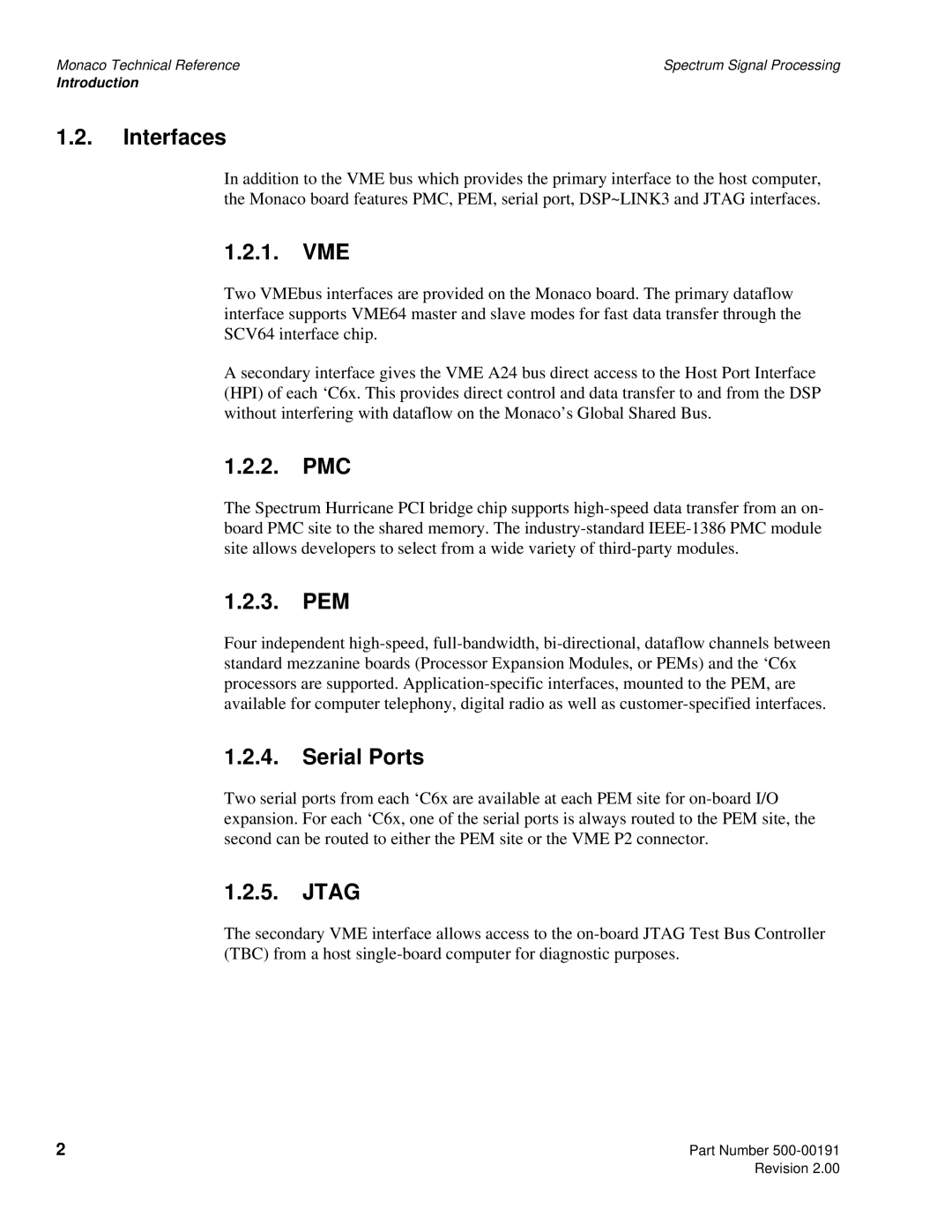Monaco Technical Reference | Spectrum Signal Processing |
Introduction
1.2.Interfaces
In addition to the VME bus which provides the primary interface to the host computer, the Monaco board features PMC, PEM, serial port, DSP~LINK3 and JTAG interfaces.
1.2.1.VME
Two VMEbus interfaces are provided on the Monaco board. The primary dataflow interface supports VME64 master and slave modes for fast data transfer through the SCV64 interface chip.
A secondary interface gives the VME A24 bus direct access to the Host Port Interface (HPI) of each ‘C6x. This provides direct control and data transfer to and from the DSP without interfering with dataflow on the Monaco’s Global Shared Bus.
1.2.2.PMC
The Spectrum Hurricane PCI bridge chip supports
1.2.3.PEM
Four independent
1.2.4.Serial Ports
Two serial ports from each ‘C6x are available at each PEM site for
1.2.5.JTAG
The secondary VME interface allows access to the
2 | Part Number |
| Revision 2.00 |
